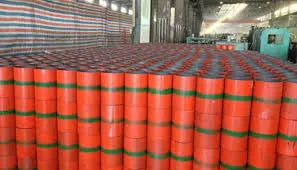- Afrikaans
- Albanian
- Amharic
- Arabic
- Armenian
- Azerbaijani
- Basque
- Belarusian
- Bengali
- Bosnian
- Bulgarian
- Catalan
- Cebuano
- Corsican
- Croatian
- Czech
- Danish
- Dutch
- English
- Esperanto
- Estonian
- Finnish
- French
- Frisian
- Galician
- Georgian
- German
- Greek
- Gujarati
- Haitian Creole
- hausa
- hawaiian
- Hebrew
- Hindi
- Miao
- Hungarian
- Icelandic
- igbo
- Indonesian
- irish
- Italian
- Japanese
- Javanese
- Kannada
- kazakh
- Khmer
- Rwandese
- Korean
- Kurdish
- Kyrgyz
- Lao
- Latin
- Latvian
- Lithuanian
- Luxembourgish
- Macedonian
- Malgashi
- Malay
- Malayalam
- Maltese
- Maori
- Marathi
- Mongolian
- Myanmar
- Nepali
- Norwegian
- Norwegian
- Occitan
- Pashto
- Persian
- Polish
- Portuguese
- Punjabi
- Romanian
- Russian
- Samoan
- Scottish Gaelic
- Serbian
- Sesotho
- Shona
- Sindhi
- Sinhala
- Slovak
- Slovenian
- Somali
- Spanish
- Sundanese
- Swahili
- Swedish
- Tagalog
- Tajik
- Tamil
- Tatar
- Telugu
- Thai
- Turkish
- Turkmen
- Ukrainian
- Urdu
- Uighur
- Uzbek
- Vietnamese
- Welsh
- Bantu
- Yiddish
- Yoruba
- Zulu
API Tubing and Casing Specifications for Optimal Oil and Gas Production Performance
Understanding API Tubing and Casing Charts A Comprehensive Guide
The oil and gas industry is highly technical and complex, with various factors influencing drilling operations. Among the most critical elements are the specifications and dimensions of tubing and casing, which are essential components for ensuring the structural integrity and safety of wells. The American Petroleum Institute (API) has established standards that guide these specifications, including the widely referenced API tubing and casing charts. This article aims to explore the significance of these charts, their utility, and how they aid engineers and operators in the oil and gas sector.
What Are API Tubing and Casing?
Tubing and casing are integral parts of drilling and completing a well. Casing refers to the steel pipe used to line the borehole after drilling, ensuring the well maintains its structural integrity and prevents collapse. Tubing, on the other hand, is the pipe through which oil and gas flow from the reservoir to the surface. Both must be selected and installed properly to mitigate risks associated with pressure, temperature, and corrosive environments.
The Importance of API Standards
API standards serve as a benchmark for manufacturers and operators in the oil and gas industry. Created through a collaborative process with industry experts, these standards ensure that products meet specific quality and safety requirements. The API tubing and casing charts provide crucial specifications such as dimensions, weights, grades, and material properties for different types of tubing and casing.
These charts help engineers select the appropriate materials based on various parameters, including the type of well being drilled, the expected downhole conditions, and regulatory requirements. For instance, different grades of steel are rated based on their yield strength, which impacts their ability to endure high pressures and harsh environments.
Understanding API Tubing and Casing Charts
API tubing and casing charts are structured to present a wealth of information in a user-friendly manner. Typically, these charts include
api tubing and casing chart

1. Dimensions The charts outline the outside diameter (OD), inside diameter (ID), and wall thickness for different sizes of tubing and casing. Understanding these dimensions is crucial in assessing how they will interact with downhole conditions.
2. Weights Each type of tubing and casing is assigned a weight per unit length, which is vital for determining the load that the well structure can withstand.
3. Grades Tubing and casing materials are categorized into different grades based on their physical and chemical properties, including tensile strength and corrosion resistance. The selection of the appropriate grade can prevent failure due to environmental conditions.
4. Specifications for Applications The charts may provide guidance on the specific applications suitable for each type of tubing and casing, such as shallow vs. deep wells or for oil vs. gas extraction.
Practical Applications
In practical applications, API tubing and casing charts serve various functions. They aid engineers in design calculations to ensure that the selected materials will withstand the anticipated pressures and temperatures. Additionally, these charts can assist in planning for equipment procurement, ensuring that the selected tubing and casing are readily available for purchase and delivery.
Moreover, these charts play a crucial role in regulatory compliance. Operators must adhere to stringent standards to ensure safety and environmental protection. By utilizing API specifications, companies can demonstrate their commitment to maintaining industry best practices.
Conclusion
API tubing and casing charts are indispensable tools in the oil and gas sector. They encompass vital information that helps engineers and operators make informed decisions regarding the selection and application of tubing and casing. By adhering to API standards, the industry can ensure safety, efficiency, and reliability in drilling operations. As technology advances and the industry evolves, these charts will continue to play a pivotal role in shaping best practices for the extraction of oil and gas resources.
-
Tubing Pup Joints: Essential Components for Oil and Gas OperationsNewsJul.10,2025
-
Pup Joints: Essential Components for Reliable Drilling OperationsNewsJul.10,2025
-
Pipe Couplings: Connecting Your World EfficientlyNewsJul.10,2025
-
Mastering Oilfield Operations with Quality Tubing and CasingNewsJul.10,2025
-
High-Quality Casing Couplings for Every NeedNewsJul.10,2025
-
Boost Your Drilling Efficiency with Premium Crossover Tools & Seating NipplesNewsJul.10,2025







